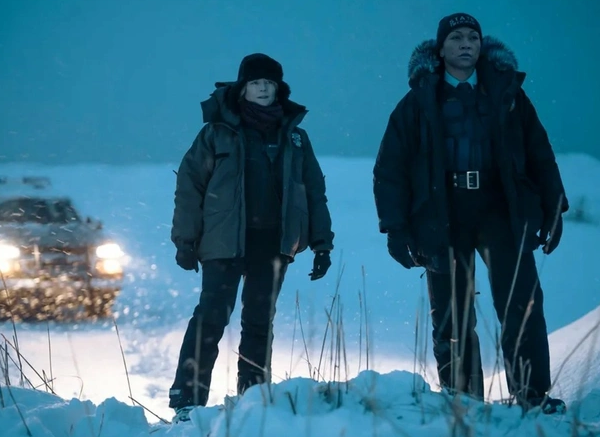Mass hysteria is when a lot of people react strongly to something that’s hard to understand. It can cause strange things to happen, like a whole town dancing uncontrollably or people getting scared about small marks on their car windows. These events might seem unbelievable, but they’ve happened before and had some surprising and sometimes bad consequences. Here are seven cases of mass hysteria from history, based on a video from The List Show on YouTube.
The Dancing Plague of 1518
In July 1518, a woman named Frau Troffea in Strasbourg, France, started dancing uncontrollably. Others joined her, and soon more than two dozen people were dancing nonstop for days. Leaders thought the cure was to let them keep dancing, so they set up stages and hired musicians. But it didn’t help and more than 400 people got sick. Some even died. Then, suddenly in September, it stopped.
Similar events happened in other places along the Rhine River in 1374. People at the time thought it might be because of demons or religious reasons. Today, some think it could have been caused by a fungus on rye bread that makes people sick. Another theory says it was caused by extreme stress during times of famine and death.
Mystery Seeds
Back in 2020, people worldwide started getting surprise packages of seeds in the mail. The packages often said they were from China and wrongly labeled the contents as jewelry. Texas’s agriculture commissioner even said to treat them as if they were radioactive and warned they could spread a new virus.
A writer for The Atlantic, Chris Heath, looked into the mystery. He found out that most of the seeds actually came from orders people had placed and forgotten about. Some orders were part of a scam where sellers send cheap items to boost their online ratings. But the seeds were just harmless seeds labeled as expensive jewelry.
People came up with wild theories about the seeds, like bioterrorism or an attack on American farms. Some thought it was meant to mess up mail service during an election.
Maybe stress from the COVID-19 pandemic made people buy things online, not realizing where the seller was. Then, when the seeds arrived late, people got scared and blamed China for it. This kind of blaming without proof has happened before in history.
The Mad Gasser of Mattoon
In September 1944, something strange happened in Mattoon, Illinois. Late at night, people smelled a weird sweet smell in their homes. Then, they got sick or couldn’t move. They thought someone was pumping gas into their homes to harm them.
They called this person the “Anesthetic Prowler,” later called the “Mad Gasser.” Once, they found a tube of lipstick and a key near a house, but it didn’t help find the person.
The town got scared, and people stayed together at night because they didn’t want to be alone. Even after the police came, they never caught anyone.
They said the smell came from a local company using a chemical for war work. But the company said they didn’t use much of it and no one got sick. The case was closed, but some still wonder if it was really mass fear or if some people were really affected.
The Seattle Windshield Pitting Delusion
In March 1954, people in Bellingham, Washington, saw small marks on their car windshields. They thought it was caused by various things like sand fleas or fallout from H-Bomb tests. By April, even Seattle had the same problem. The governor, scientists, and even President Dwight D. Eisenhower were told about it.
Police checked 15,000 cars and found damage on only 3000. They said 5 percent of the damage was caused by mischief, but the rest was just people getting worried over nothing. The marks were likely just from regular use.
But because of all the news, people thought there was something more to it. In April, the reports stopped in Seattle but started in other places. Eight more states and Canada reported the marks on cars, airplane windows, and even greenhouse roofs in Michigan. Some thought it was because of the H-Bomb, while others thought it was bugs or marine life remains.
By the end of summer, the excitement died down, and no one found a real reason for the marks. It’s believed people just noticed normal marks on windows, which they might not have noticed without all the attention in the news.
The Tanganyika Laughter Epidemic
In 1962, students at a boarding school in what is now Tanzania couldn’t stop laughing. The laughter spread from the school to parents, neighbors, and even nearby villages, causing more than a thousand people to laugh uncontrollably. It went on for over a year, but it wasn’t nonstop laughing, as some stories say. The laughter would stop and start again in different places.
Now, historians think the laughter wasn’t because things were funny but because people were anxious. Tanzania had just become independent from British rule, and there were lots of changes happening. Younger people felt pressured by their elders’ high expectations, which affected their mental health.
The Great Clown Panic of 2016
In 2016, there was a widespread fear of evil clowns that caused a lot of panic. It started with a clown named Gags in Green Bay, Wisconsin, who was just standing on a corner with black balloons. Turns out, he was part of a marketing stunt for a movie. But after that, there were reports of scary clowns in other places, like kids seeing them in the woods in South Carolina and harassing children at a bus stop in Georgia. Similar reports came from many states, but no evil clowns were ever caught, except for a few people dressing up to join the hoax. Some people got arrested for making false reports about clowns.
It got so bad that police had to tell people not to shoot random clowns. This wasn’t the first time we’ve seen this kind of panic. Similar clown sightings have happened before since at least 1981, in different countries, usually during times when people are feeling uneasy or panicky.
The Salem Witch Trials
One of the most famous and deadliest cases of mass hysteria in history is the Salem Witch Trials that happened in Massachusetts in 1692. It all started when two young girls, aged 9 and 11, began having strange fits with screaming and violent movements. A doctor said they were bewitched, and this idea quickly spread through the village. Five more girls got the same symptoms, and they blamed three people: an enslaved woman named Tituba, a beggar named Sarah Good, and an old lady named Sarah Osborne.
Tituba, thinking it might save her, said it was true during the trial and even named more supposed witches. This made everyone panic, and more people were accused. Even a 4-year-old girl got thrown in jail for 8 months. Some of the accused confessed, thinking it was their only way out, but it wasn’t. Around 25 people died in total (there’s still disagreement about the exact number), with 19 hanged, about five dying in jail, and one crushed by stones for not pleading guilty.
Soon after, people realized how wrong Salem had been. Five years later, one of the judges apologized, and five years after that, the Massachusetts General Court said the trials were wrong. More than three centuries later, the last woman accused but not executed, Elizabeth Johnson Jr., was finally cleared of any wrongdoing in 2022 after a group of students campaigned for her pardon.









